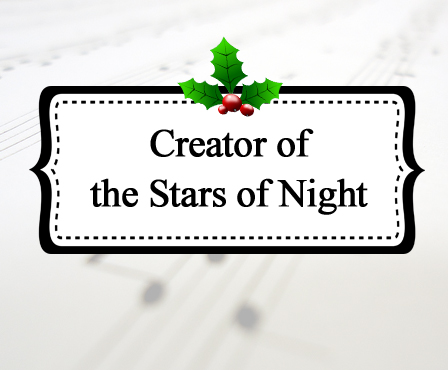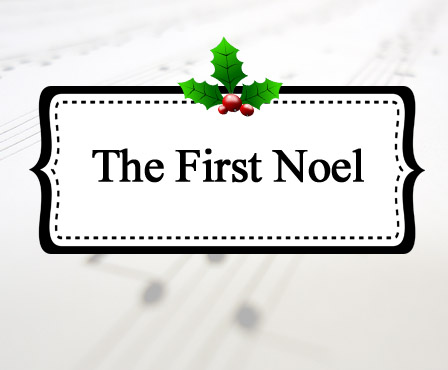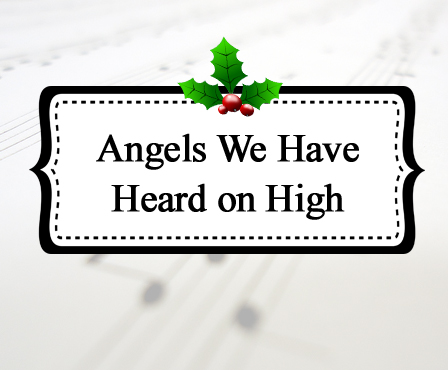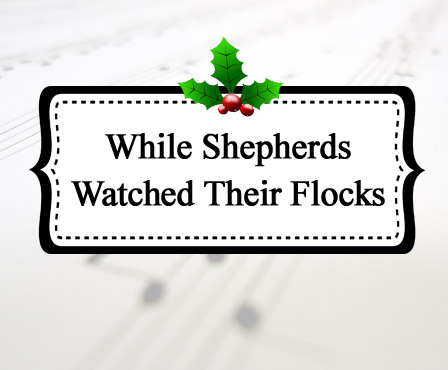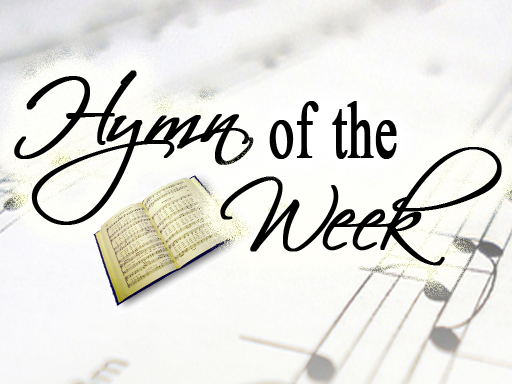O Come, O Come, Emmanuel
This page includes a lyric video, a brief history, sheet music, and other resources for the Advent and Christmas hymn “O Come, O Come, Emmanuel.” Enjoy!
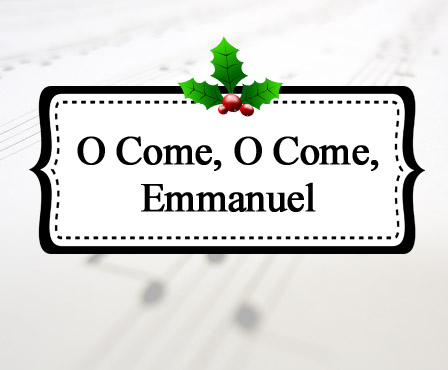
Enjoy this You Tube video with lyrics of “O Come, O Come, Emmanuel”:
History of “O Come, O Come, Emmanuel”:
The Advent hymn “O Come, O Come Emmanuel” is a versification of the Christmas antiphons commonly called the O’s [or O Antiphons]. The word antiphon comes from a Greek word meaning “opposite voice” and generally refers to one group responding to another during a song or chant. Interestingly, the structure of the Psalms lends itself to an antiphonal method of singing and suggests that ancient Israelites sang this way.
The “O Antiphons” refer to the seven antiphons that begin with the word “O” and are recited during the “Octave,” the eight days before Christmas. There is one antiphon for each day from December 17-23, with December 24, Christmas Eve, being reserved for the Christmas vigil. There is evidence to suggest that the O Antiphons existed as early as the 5th century.
The Latin form of the “O Antiphons” is found in the Roman Breviary (a liturgical books of prayers, hymns, Psalms, and readings). Below are the Latin headings with an English translation. Each antiphon highlights a title of the Messiah as prophesied in the book of Isaiah (written over 600 years before the birth of Christ).
O Sapientia: O Wisdom
O Adonai: O Lord
O Radix Jesse: O Flower of Jesse
O Clavis David: O Key of David
O Oriens: O Radiant Dawn
O Rex Gentium: O King of all the Nations
O Emmanuel: O Emmanuel (God with Us)
Interestingly, if we take the first Latin letter of each antiphon, ignoring the “O”, and work our way back from the last to the first, it spells out “ERO CRAS.” In Latin, this means “I shall be [with you] tomorrow.”This “hidden” meaning is revealed a little more each day as we draw closer to the birth of Jesus!
Dr. John Mason Neale, the first to translate the song “O Come, O Come, Emmanuel” from Latin to English, believed that around the 12thcentury, an unknown author took five of these Antiphons, and wove them into a hymn. Dr. Neale found the full Latin text of the hymn in a book called Thesaurus Hymnologicus (1844) compiled by Professor Hermann Daniel in Germany. He published his first translation with the opening line “Draw nigh, draw nigh, Emmanuel” in Mediaeval Hymns, 1851. Neale’s work was later altered to the familiar “O Come, O Come, Emmanuel” by the compilers of an 1859 trial copy of Hymns Ancient and Modern. Various alterations were made over time, and two of the verses used in the lyric video were translated by Henry S. Coffin (1877-1954), a popular New York pastor who served as the president of Union Theological Seminary for almost 20 years.
In regard to the tune “Veni Emmanuel,” some scholars believe that its origin comes from the Gregorian chant of the eighth century. However, the oldest known record of the tune, according to The New Oxford Book of Carols, comes from a “French source, a fifteenth-century Franciscan processional.”This source contains verses that were generally sung during the procession to a burial place after a funeral.
Thomas Helmore, a friend of Neale’s, received a document from Lisbon that paired this tune with the text of the “O Antiphon” hymn. In 1854, Helmore published the tune “Veni Emmanuel” along with Neale’s translation of the text in his Hymnal Noted, Part II. Helmore was an ordained priest in the Church of England and played a major role in reviving ancient chant melodies, as well as introducing English translations of medieval Latin hymns.
For more intriguing history on “O Come, O Come, Emmanuel” (and 19 other classic Christmas songs), you can purchase our Christmas Songs eBook (only $2.99; use code “celebrate20” for 20% off).
You can also download our free, complimentary Sheet Music for “O Come, O Come, Emmanuel” (note that the sheet music uses a different translation for some of the verses than the lyric video).
For additional resources (like original sheet music), visit Hymns and Carols of Christmas or Net Hymnal.
This page was created by:

Back to main Christmas Songs page or our 25 Days of Christmas Music page.
We welcome your ideas! If you have suggestions on how to improve this page, please contact us.
Information on this page was drawn from our featured Christmas book.
You may freely use this content if you cite the source and/or link back to this page.
